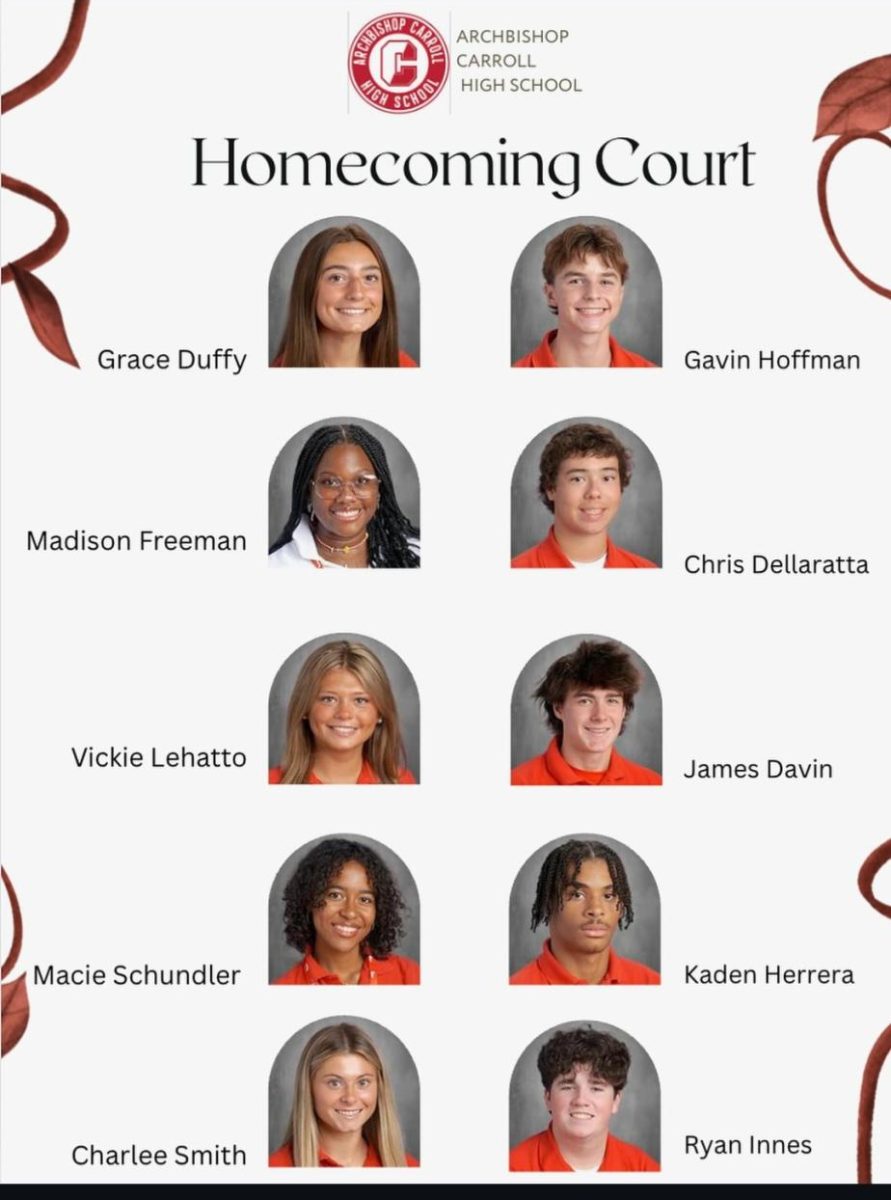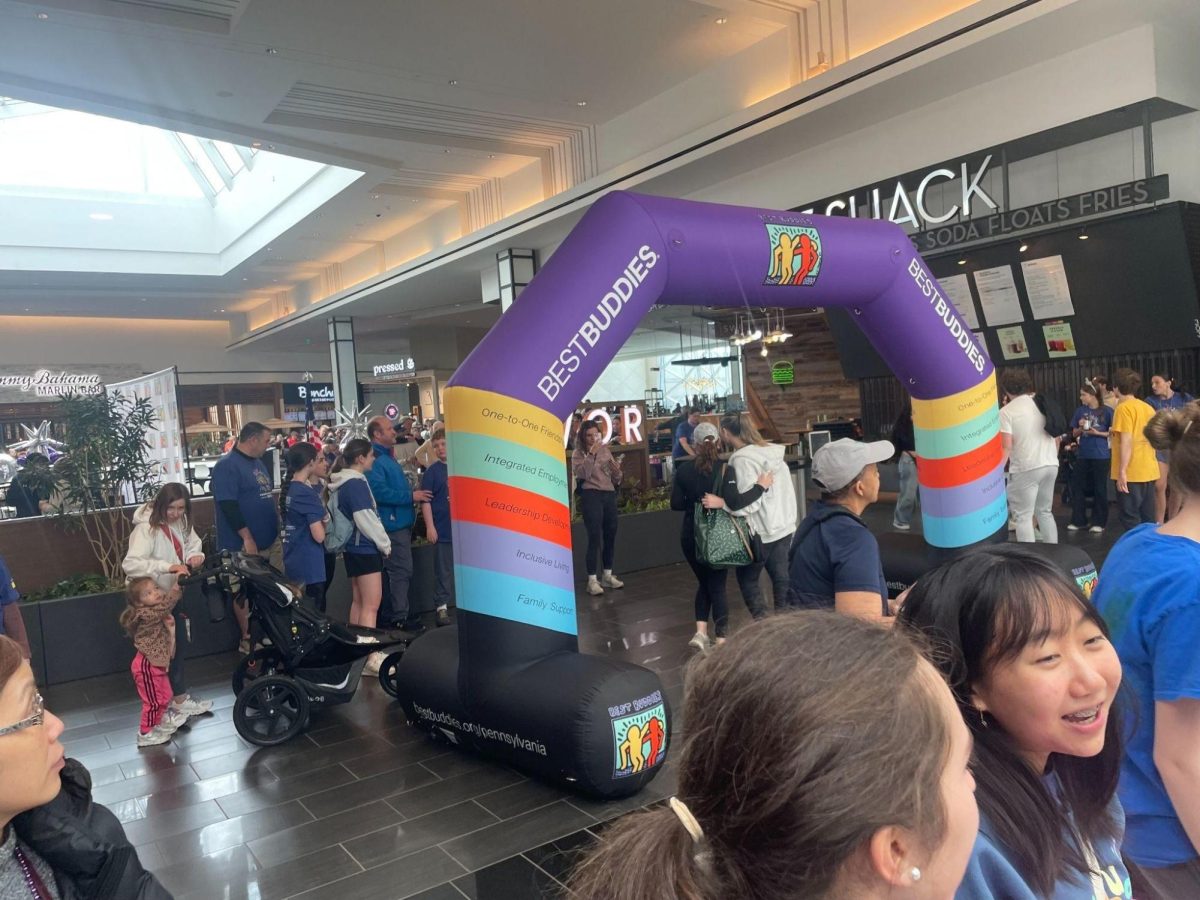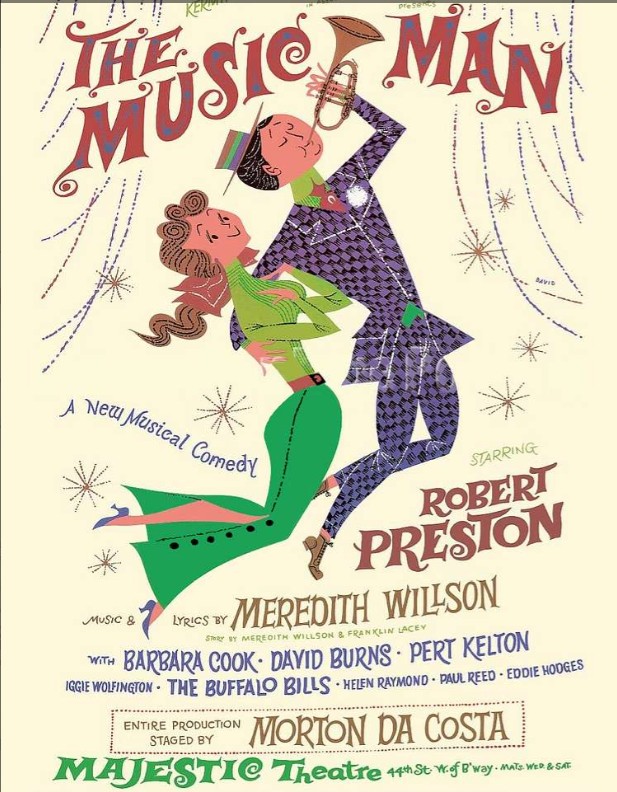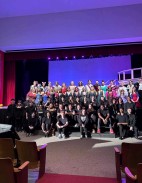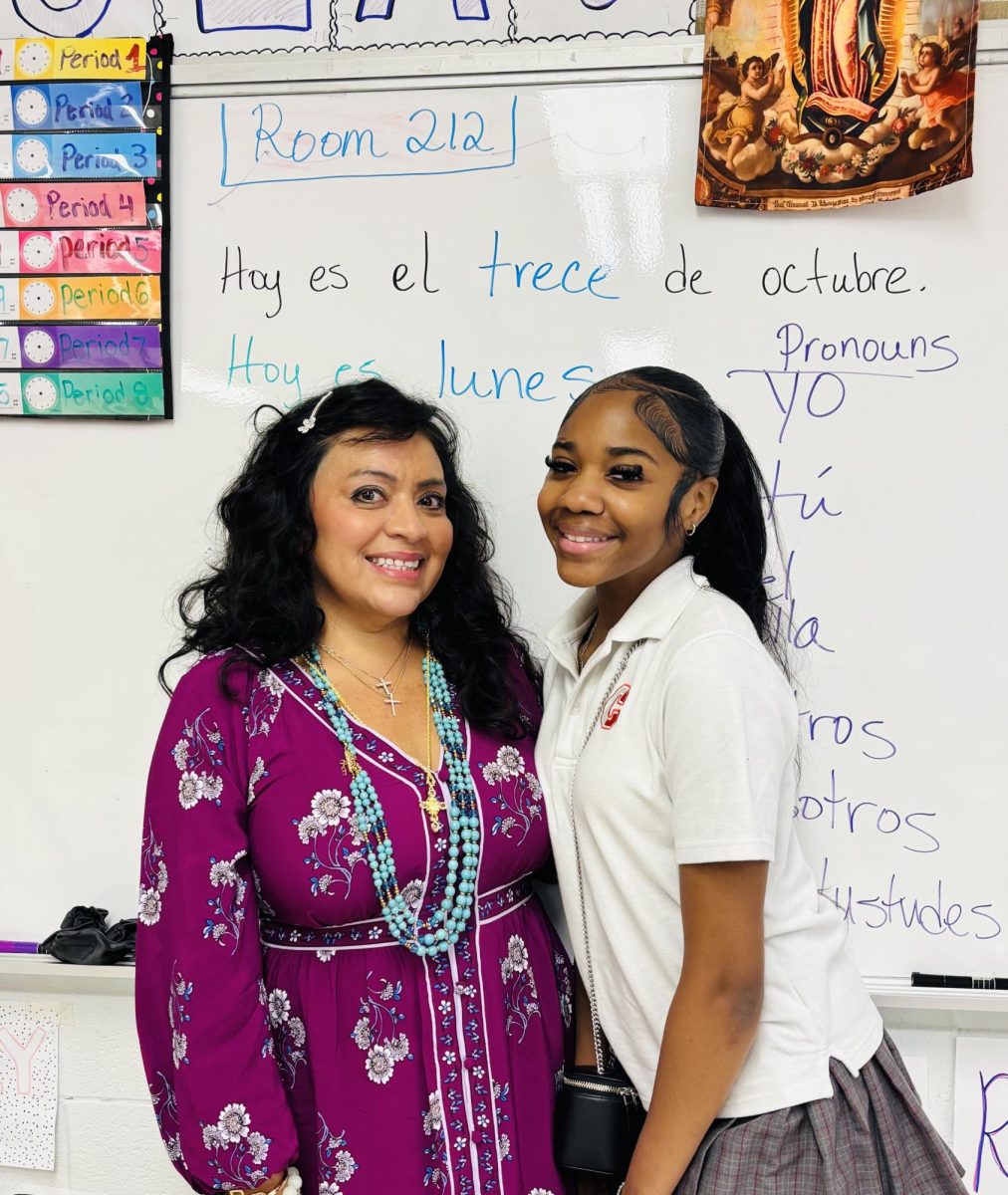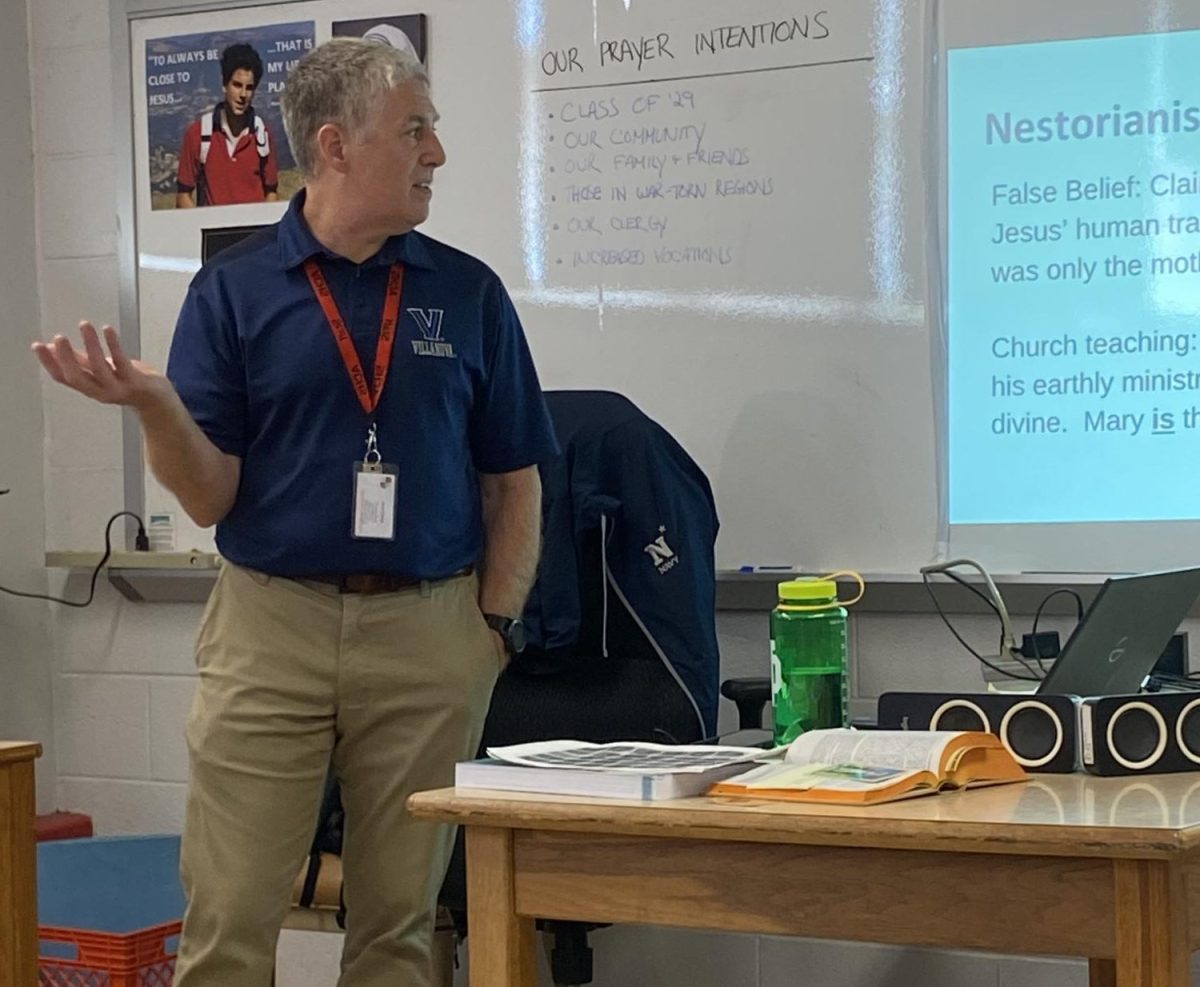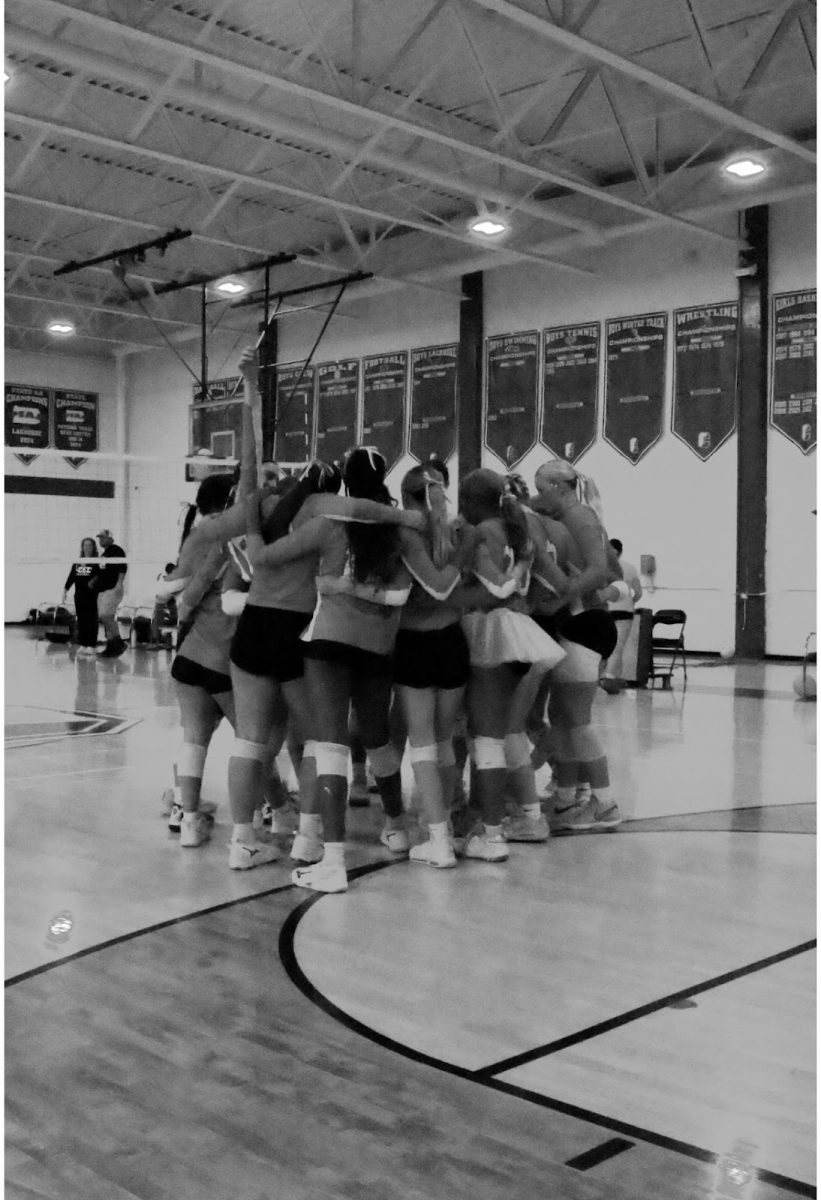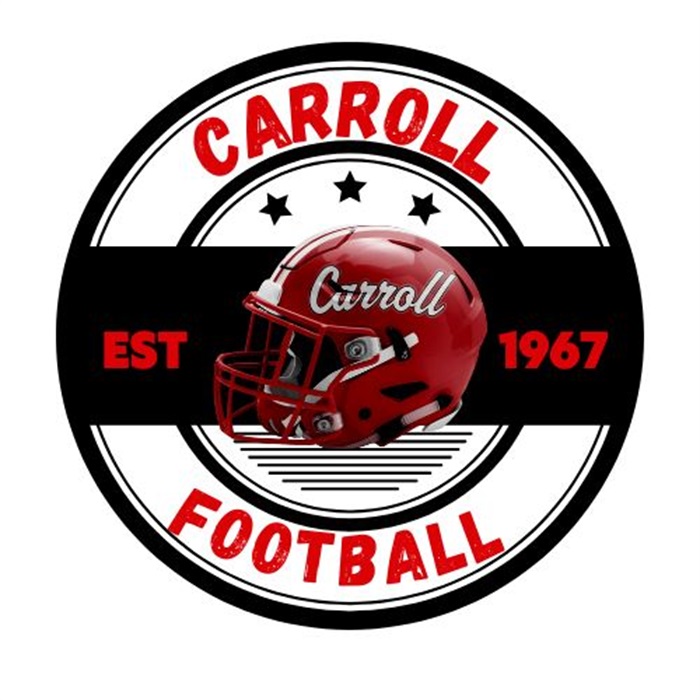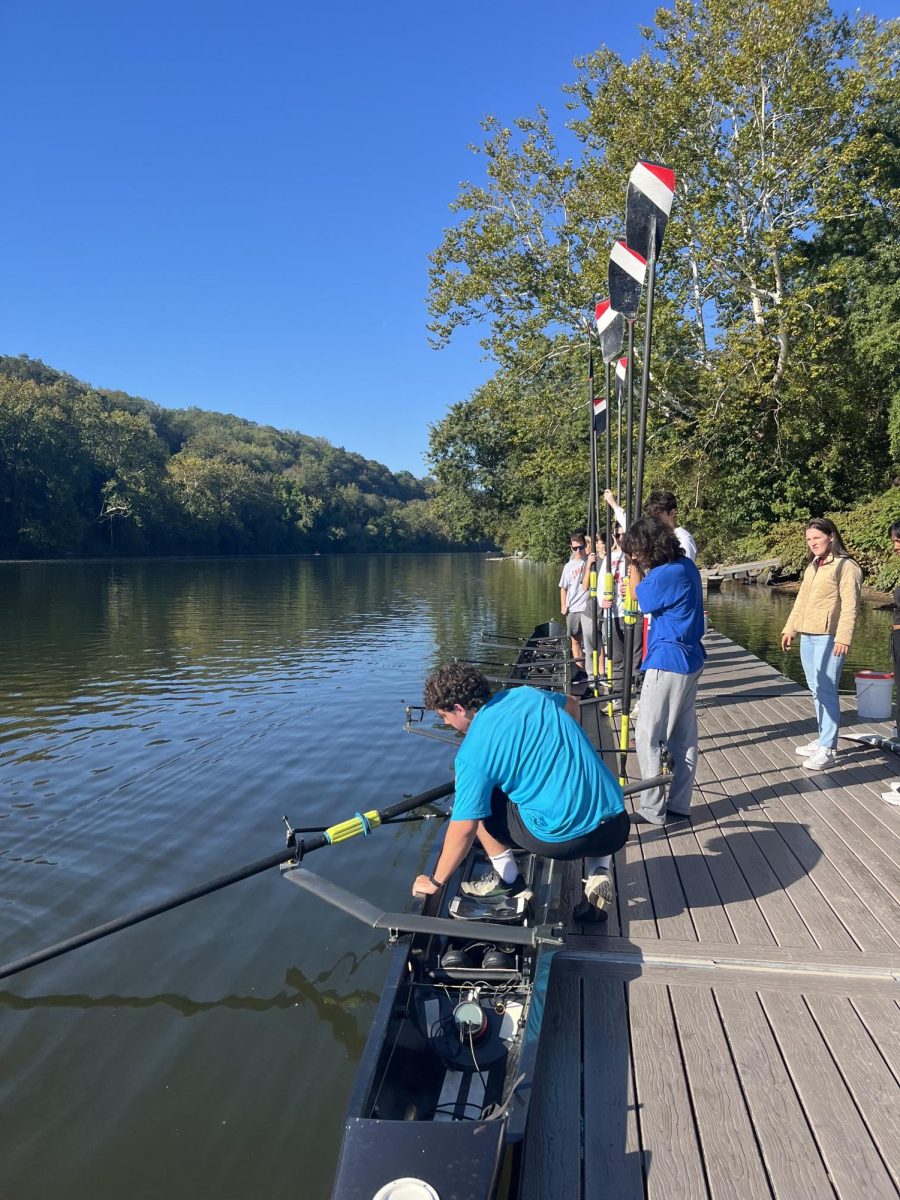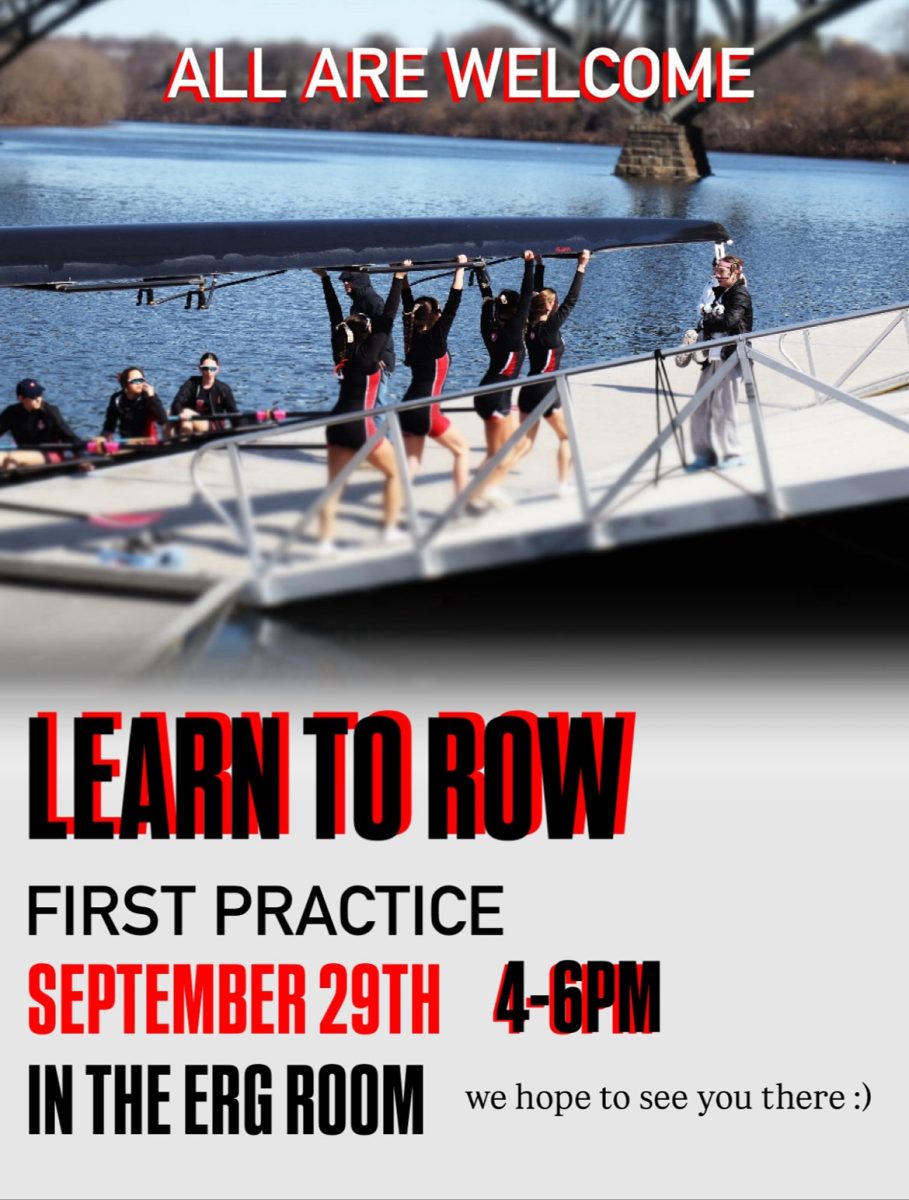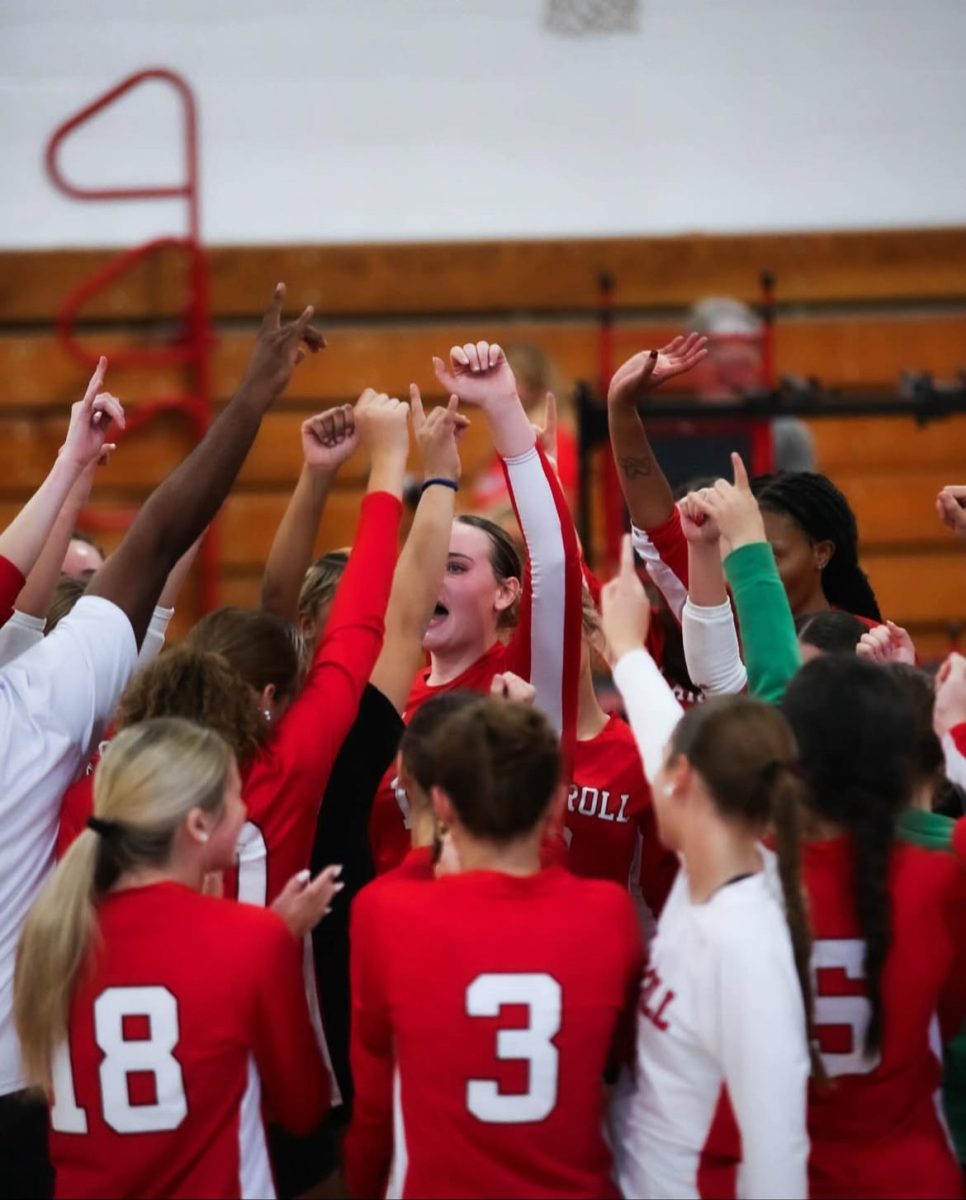Archbishop Carroll crew has hosted a Learn to Row program that has brought out potential new rowers.
After learning the components of a stroke in Carroll’s erg room during the first Learn to Row session last week, Learn to Row members learned more about the sport at the Hines Rowing Center, Carroll’s boathouse in Conshohocken. There, they learned the types of boats used by the team, fundamental terminology, and what to expect at the boathouse, along with getting in the boat with the varsity members. Three boats were involved: a girls’ four, a girls’ eight and a boys’ eight.
At the boathouse, the Learn to Row members were shown the storage areas for the oars, the locker for the team, and which docks were used for “shoving” (the dock where the boats are sent out) and “docking” (the dock where boats come in after their time on the river). They also learned about the correct sides for the oars, port (left, red) and starboard (right, green). These are differentiated by a colored ring located next to the blade of the oar to reduce confusion. After learning the basics of the boathouse, students were tasked with carrying a boat from the boathouse to the shoving dock.
Whether it be on the water or on land, being in sync with the other rowers was a crucial step in keeping practice successful. Varsity members emphasized the importance of this, with the first example happening as the boats were being taken out. Varsity rower Julian McPherson taught the boys in the boys’ eight how to properly remove a boat by placing both hands on the gunnel (portion of the boat where the carbon fiber is flat on the edge) before carefully pulling it out.
“It’s exciting how many people came today,” McPherson said as he walked the boat down to the water. “And to think I was here three years ago, absolutely clueless, shows me just how much responsibility comes with teaching for success.”
When walking the boat down to the “shoving” dock, the Learn to Row members were instructed to have their “toes to the edge” (feet should be parallel with the dock) before rolling it into the water carefully. As the boys waited on the dock for oars to be provided by the varsity, another varsity member taught them the importance of knowing “bow” (front of the boat, indicated by a white rubber ball) and “stern” (back of the boat, no ball, only a small metal ring to hang tags for transit). By learning this detail, they learned the importance of having to place the boat on its correct side to avoid confusion.
Once on the water, Learn to Row members were tasked with “setting the boat” (keeping the oar flat on the water), while the varsity led the strokes, showing the technical aspects they had learned on the erg machines. From here, all boats were instructed to dock to debrief and review the schedule for the rest of the week.
Stéphane Pascual, a junior partaking in learn to row, expressed positive feedback.
“Being in the boat was honestly pretty interesting,” Pascual said cheerfully. “I’m definitely looking forward to the next practice on the water so I can finally row, too.”
Another boy had similar thoughts.
“Apparently, I kept ‘catching a crab’ [lost control of oar, causing it to get wedged at an awkward angle in the water],” freshman Jack Vigilante said, “but, luckily, Julian helped me get out of it several times.”


